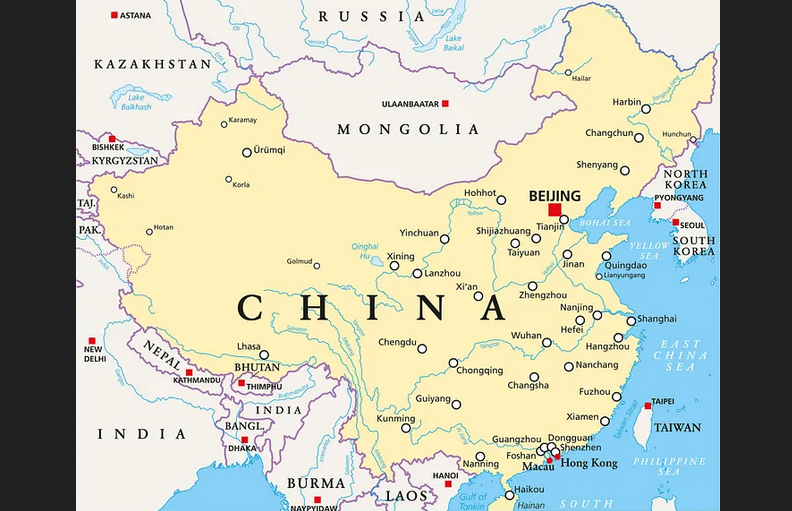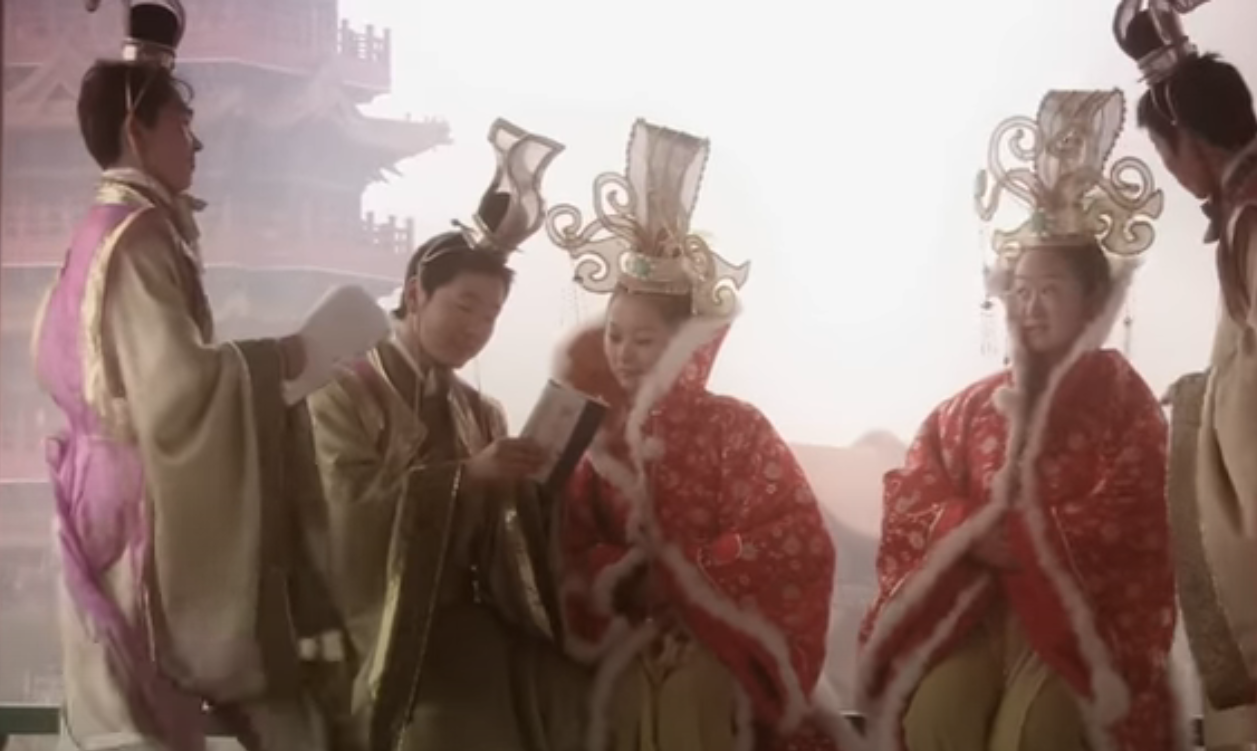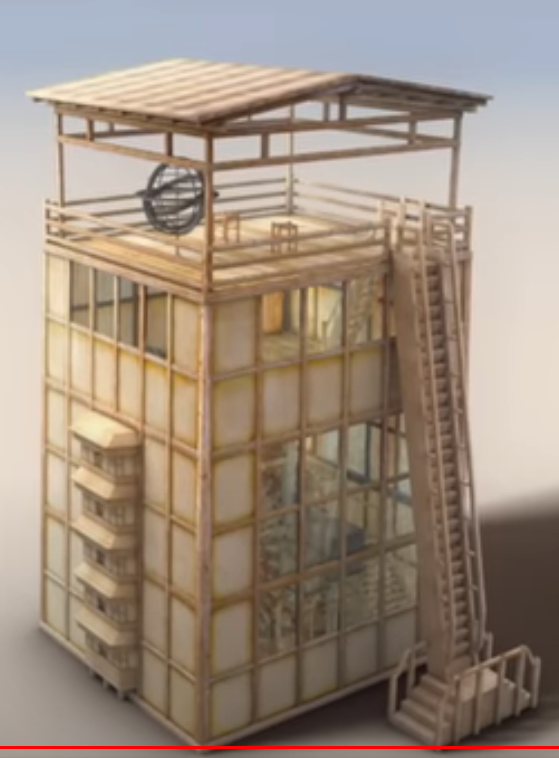 By Neenah Payne
By Neenah Payne
Westerners are led to believe the Europe and America created the modern world and no other cultures contributed much if anything. So, it comes as a shock to learn about the profound contributions of ancient Egypt, The Golden Age of Islam from 622-1258, India, Native America, and China. The world has a very rich and fascinating history that only enhances us when we learn more about it. This article focuses on some of the Chinese contributions.
A video linked to further below points out: “We must certainly admit that many of the inventions and discoveries upon which the modern world rests come from the great minds of ancient China. Will we have to re-write the history books and will we have to re-think everything we thought we knew about the ancient world?”
The Amazing Silk Road Returns! shows that after Venetian merchant Marco Polo (1254 –1324) traveled the Silk Road to China from 1271-1295, his book The Travels of Marco Polo enthralled Europe with tales of the wealth of the East. It tantalized Europe with news of China’s immense wealth and advanced civilization and was one of the most influential books in history. In 850 AD, China had invented paper – which made Marco Polo’s book possible. Favorite commodities from Asia included silk, jade, porcelain (“fine China”), tea, pearls, ivory, and spices (pepper and cinnamon). It is hard to overstate the importance of the Silk Road. Ancient China was 1,000 to 2,000 years ahead of the West technologically. The exchange of information gave rise to innovations that changed the world and affect us today.
Ancient Chinese Inventions
Top 20 Chinese Inventions
Ingenious Inventions of Ancient China (video)
The Four Great Inventions of Ancient China (video)
10 Famous Chinese Inventions that Changed the World
The Genius of China: 3000 Years of Science, Discovery and Invention (book)
Four Great Inventions of Ancient China | Compass, Gunpowder, Paper, Wood Block Printing (video)
| 01 | Toothbrush (1498 AD) | 20 | Lacquer (200 BC) |
| 02 | Compass (1100 AD) | 21 | Blast Furnace (200 BC) |
| 03 | Gunpowder/Fireworks (1000 AD) | 22 | Stirrup (200 BC) |
| 04 | Moveable Type Printing (960-1279 AD) | 23 | The Crossbow (300 BC) |
| 05 | Paper Money/Bank Notes (800’s AD) | 24 | Hang Gliders (300 BC) |
| 06 | Mechanical Clock (725 AD) | 25 | Abacus (500 BC) |
| 07 | Porcelain (581-618 AD) (fine “china” – cups, bowls, plates) |
26 | Row Crop Farming (600 BC) |
| 08 | Matches 577 AD | 27 | Moldboard Plow (600 BC) |
| 09 | Seismograph (300 AD) | 28 | Kite (700 BC) |
| 10 | Oil Drilling (300 AD) | 29 | Iron Smelting (1050-256 BC) |
| 11 | Rocket (228 AD) | 30 | The Seed Drill (1280 BC) |
| 12 | Earthquake Detector (132 AD) | 31 | Umbrella (1,200 BC) |
| 13 | Suspension Bridge (90 AD) | 32 | Decimal system (1,300 BC) |
| 14 | Paper (50-121 AD) (books, wrapping paper, boxes, facial tissues, toilet paper) | 33 | Bronze (1,700 BC) |
| 15 | Rudder (100 AD) | 34 | Noodles (2,000 BC) |
| 16 | Deep Drilling (100 BC) | 35 | Tea Production (2,737 BC) |
| 17 | Wheelbarrow (100 BC) | 36 | Silk (3,000-4,000 BC) |
| 18 | Adjustable Wrench (100 BC) | 37 | Waterwheel |
| 19 | Acupuncture (200 BC) | 38 | Alcohol (7,000 BC) |
The Tang and Song Dynasties
The Tang dynasty (618–907) is considered a golden age in Chinese history. It succeeded the short-lived Sui dynasty (581–618) which reunified China after almost 400 years of fragmentation. The Tang benefited from the foundations the Sui had laid and built a more enduring state. Known for its strong military power, successful diplomatic relationships, economic prosperity, and cosmopolitan culture, Tang China was, without doubt, one of the greatest empires in the medieval world.
The Tang and Song (960–1279) dynasties are considered the “medieval” period of China and were among the most advanced civilizations in the world at the time. The Song achieved incredible feats.
Discoveries in science, art, philosophy, and technology provided a level of sophistication unrivaled, even in China, until much later times.
The Song dynasty was culturally the most brilliant era in later imperial Chinese history. A time of great social and economic change, the period in large measure shaped the intellectual and political climate of China down to the 20th century. During the Song, great advances were made in science and technology. Hydraulic engineering, canals and bridge building, and the construction of enormous seafaring vessels were perfected. Chemical science, pursued in the secret laboratories of Taoist scholars, helped to produce important compounds including gunpowder—and by the year 1000, bombs and grenades became available to Song armies.
Perhaps the most significant advance, however, was the invention of movable type printing achieved around 1040 — 400 years before Gutenberg’s printing press in Europe. Song printed editions of text previously transmitted as handwritten manuscripts which helped spread literacy and knowledge throughout the country. Many books survive and are technological marvels which are highly prized as some of the most beautiful books ever produced.
The rule of the Song ended in 1279 when Mongol leader Khubilai Khan brought the Song territories entirely within the fold of the newly-proclaimed Yuan dynasty. The Tang and Song dynasties stand out as among the most accomplished of all civilizations in global history. They gave the world many contributions and helped to shape Chinese civilization into what it is today.
Ingenious Inventions of Ancient China | Ancient Discoveries (S1, E10) 3/30/22
One thousand years ago, when Europe was still in the dark ages, China was at the forefront of technology. We unveil the remarkable story of how China created a myriad of ingenious devices, in Season 1, Episode 10, “Machines III.”
The video begins by discussing the oil drilling techniques China invented and used centuries before the West. It then shows the seismograph — the earthquake detector — China pioneered. It talks about gunpowder which not only revolutionized warfare, but even led to rocket and missile development.
The Amazing Silk Road Returns! explains that use of that explosive technology allowed the US to create the Erie Canal which connects the interior of America to the Atlantic Ocean and the world through New York City. That turned New York into a world-class center.
The video explains that the zenith of ancient Chinese innovation took place during the Song dynasty. Huge cities with populations of hundreds of thousands were the centers for trade, industry, and commerce.
The Chinese had huge factories capable of mass production. The dynasty launched a 300-year reign of incredible inventions and machines. These inventions revolutionized warfare and would even lead to man exploring space using navigational instruments that guide mankind’s journey of discovery.
The machines fundamentally matched the principles of modern technology. Ancient China was using water-powered gear technology that would not be seen in the West until it was invented in Bagdad by Arabs during The Golden Age of Islam (622-1258).
The video shows a gear-powered watermill with mechanized millstones China used to grind grain. Model maker Richard Windley says, “What we’re looking at is almost a precursor of the Industrial Revolution. This is industrialization on a scale we would recognize today.”
The video says, “The sophistication of Chinese gear technology was highly advanced. There is evidence that the Chinese had a long tradition of geared machines.” Beautiful engraved rings were discovered in tombs dating back to 400 BC. The video explains that spiral design on the rings could have been produced only by a compound machine, with a geometric accuracy impossible to do by hand.
It explains, “Over thousands of years, technological innovations crept slowly but steadily from the advanced East to the West over the 4,000-mile Silk Road – going through Bagdad, the capital of Iraq where the legendary House of Wisdom was located.”
The Terracotta Army
The Terracota Army buried near the tomb of Emperor Chin (259-210 BC), the first emperor of China, to protect him in the afterlife, is located in Eastern China and was discovered 30 years ago. It is startling evidence of the magnificence and grandeur of ancient China. Many now consider it the 8th Wonder of the Ancient World. Prof. Jessica Rawson of the University of Oxford says the Terracotta Army is considered one of the world’s top archaeological finds – as important as the Egyptian pyramids, if not more important.
The army contains over 8,000 warrior statues of stupendous quality. They are fully armed with fully-functioning lethal bronze weapons. Over 2,000 years later, these weapons still have the capacity to inflict enormous damage. What is particularly impressive is that these warriors and their weapons were mass produced in metal-forging factories. Historian Chris Peers pointed out that each figure was individually sculpted with technology that was not available in Europe until the 18th century.
The Chinese had established highly-avanced standards for metallurgy and metal production. The emperor’s full-scale chariots some of themost unbelievable finds. Each chariot has 3,642 separate gold, silver, or bronze components that were designed to fit together perfectly. The 37” swords found are still razor sharp! After 2,000 years, these bronze weapons still glitter and still retain their cutting-edge sharpness! Archeologists believe that the weapons are covered with a highly-protective layer of oxidized chromium that wasn’t developed in the Germany until the 1930s and in America in the 1950s.
Emperor Chin employed 700,000 people who worked for 10 years or more to build the tomb. That is equvalent to the labor force of 40 automobile factories. Each warrior required about 300 pounds of clay.
The Cosmic Engine
An inventor during the Song dynasty created a machine in 1092 AD that is nothing short of stunning and would cement China’s reputation at the cutting edge of ancient technology. It was known as “The Cosmic Engine” and was the ancient world’s astronomical computer. It stands alone as the embodiment of Chinese expertise in science and engineering.
It was built by Tsu Song, a Chinese innovator way ahead of his time – a master of precision technology and a brilliant all-round engineer. His amazing invention was so complex that for centuries, its workings were an enigma to engineers and inventors.
It was a huge water-controlled astronomical cosmic computer simply called “The Cosmic Engine”.
It is such an incredible feat of engineering and science that few Western scholars believe it could have existed. It is considered to be one of the most splendid achievements in the history of ancient Chinese inventions. It was designed to calculate time – not just hours and minutes – but the weeks, months, and seasons. The ancient Chinese understood that the calendar reflects the way Earth moves around the sun. What makes this machines truly stand apart is that The Cosmic Engine also calculated the way the Earth and planets move through space.
The ancient Chinese believed that the movement of the stars was related to the destiny of the country’s rulers. The Cosmic Engine is 12 meters tall and includes four major systems consisting of 400 parts. It is such a masterpiece of mechanical design and manufacturing – a marvelous achievement for the time.
The video says:
Tu Song’s treatise “A New Design For a Mechanized Armillary Sphere and Celestial Globe” written 900 years ago contains detailed bluprints which show exactly how the machine was built. It contains 47 illustrations – including all the parts and their assemblage.
The Science and Technology Museum in Beijing used the blueprint to build a fully-accurate reconstruction which looks like a tower. The whole mechamism was five stories tall. On the front of the tower was a pagoda structure with each of the five stories having a door through which mannequins ringing bells and gongs and holding tablets to indicate the hours of the day and night.
A celestial globeshowing the movement of the stars inside the tower turned in synchronization with a sphere just above it. As the celestial globe turns, so does the sphere. This meant that the analysts and engineers using the computer could compare and cross-reference between both globes and record multiple data. All of the time indicators were controlled by the same giant machinery which simultaneously turned the sphere and theglobe
Within the mechanism is the earliest example of an escapement – a concept essential to modern mechanical clockwork. In any form of clock-based machinery, power must be delivered to the mechanism in a precise fashion which can be accurately regulated. The rationing of power is the function of this escapement and is something Tsu Song solved successfully.
Tsu Song inicluded a cogged wheel in the system. Connected to this was a stopper that only allowed the cog to rotate at a specific rate by stopping the rotation briefly, then allowing it to continue, at a precise regular frequency. It is this ingenious system that allowed the invention of Western clocks centuries later. In fact, it is the periodic stopping and releasing of the escapement that causes the ticking sound of any clock or timer today.
Another ingenious aspect of The Cosmic Engine was its power source – a great scooped wheel using water and turning all the shafts working the various devices. This ancient mega machine ran from the 11th century until it was destroyed by political enemies of the Song Dynasty. The Cosmic Engine is considered by some scholars to be the greatest mechanical achievement of the Middle Ages – anywhere in the world.
The Song Dynasty would leave a legacy to scienceand technology, engineering and industrialization that would change the world iireversibly. Although ancient Chinese history is littered with evidence of complex machines, many ingenious designs were inconceivable and unbelievable to the West at the time. Through the decoding of texts and archeological investigations into ancient Chinese knowledge, we must certainly admit that many of the inventions and discoveries upon which the modern world rests come from the great minds of ancient China.
Will we have to re-write the history books and will we have to re-think everything we thought we knew about the ancient world?
Overview of History
Ancient China and Rome: 1000 Years of Contact (video)
All of China’s Dynasties in ONE Video – Chinese History 101 (video)
Ancient China: A Complete Overview | The Ancient World (Part 3 of 5) (video)
The Origins Of China: The Ancient Civilization That Birthed A Superpower (video)
All China’s dynasties explained in 7 minutes (5,000 years of Chinese history) (video)
Cao Cao’s Tomb: Ancient Secrets Of The Three Kingdoms | Mysteries Of China (video)
2,000 Years of Chinese History! The Mandate of Heaven and Confucius: World History #7 (video)
The Three Lost Treasures Of Ancient China’s Buried Tombs | Mysteries Of China Full Series (video)
Timeline of World History (charts)
Timeline of World History | Major Time Periods & Ages (video)
Timeline of World History | Major Time Periods & Ages (Book/Charts)
Timeline of World History is a unique work of visual reference from the founders of the Useful Charts website that puts the world’s kingdoms, empires, and civilizations in context with one another. A giant wall chart shows the timelines and key events for each region of the world, and four additional foldout charts display the history of the Americas, Europe, Asia and the Pacific, and Africa and the Middle East. Packed with maps, diagrams, and images, this book captures the very essence of our shared history.
Neenah Payne writes for Activist Post
Become a Patron!
Or support us at SubscribeStar
Donate cryptocurrency HERE
Subscribe to Activist Post for truth, peace, and freedom news. Follow us on SoMee, Telegram, HIVE, Minds, MeWe, Twitter – X, Gab, and What Really Happened.
Provide, Protect and Profit from what’s coming! Get a free issue of Counter Markets today.





Be the first to comment on "How China Created The Modern World"